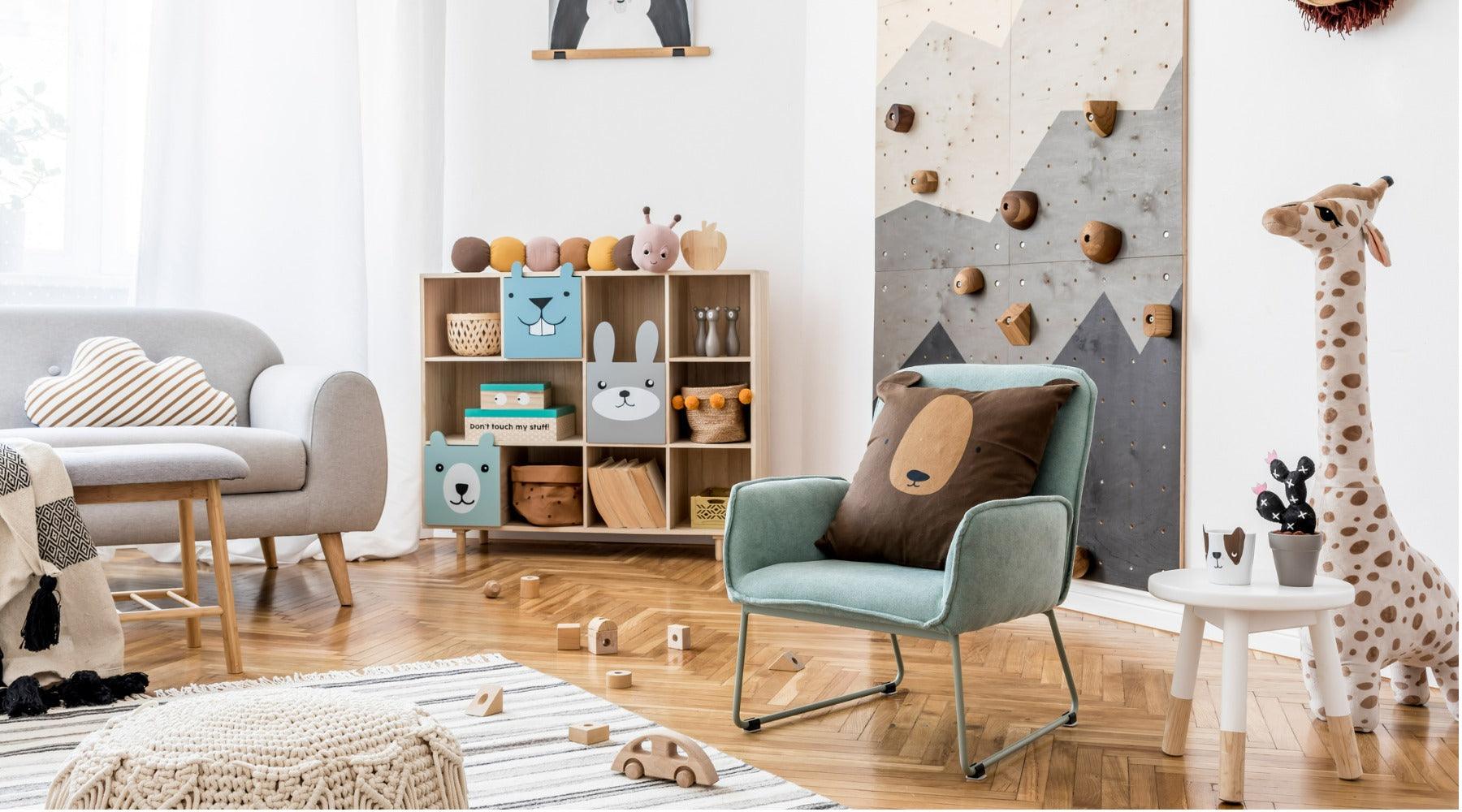
How to Create a Scandi-Style Kids’ Room
Scandinavian design emphasizes practicality and simplicity, making it ideal for a kids’ room. Though white-walled minimalism is a big part of the Scandi ethos, there’s plenty of scope for play, from vibrant prints to touchable textures. And, of course, the sheer range of high-quality Danish bedding will ensure that your child gets a great night’s sleep.
Paint Walls White But Embrace Color Too
As a rule, Scandinavian design is all about white, especially as a background color—white is evocative of northern European snow, and is great for reflecting light during dark winter months. White walls are the perfect backdrop for your kids’ creativity: hang their art without worrying whether colors will match! Follow the lead of Scandi design legends Finn Juhl and Svenskt Tenn by adding pops of color with cushions, rugs, and upholstery.

Keep It Clean
Kids’ rooms get messy enough, so why add additional clutter? Scandinavian design is all about clean lines and minimalist design, so keep ornaments to a minimum and buy furniture that’s simple and geometric, while making sure that there aren’t any exposed edges or corners that kids might hurt themselves on. Where possible, go for wood floors over carpets—not only do they fit the Scandi look, they’re also easier to clean! When it comes to toys, it’s quality over quantity—together with your children, select a small number of toys and books that will be well-loved over the years, rather than a large number of throwaway items.
Think Tactile Textiles
Your child’s room should feel safe, cozy, and welcoming—in other words, it’s the perfect spot for a bit of hygge. While we don’t recommend filling your child’s room with candles, there are other ways to add a little hygge magic—not least through textiles. Hygge is found in piles of cushions and blankets with touchable, tactile texture: think chunky knits, (faux) fur, and linen. Arrange these on a comfy chair or bean bag next to the bookshelf, add a soft lamp overhead and you’ve got a hyggekrog, or reading nook—the perfect place for a bedtime story.

Start a Conversation on Conservation
If your children are old enough, redecorating their room can be a great way to teach them about sustainable living. Keep it light and fun—take them toy shopping at a thrift store or get them involved in a DIY upcycling project. Even painting a nature-themed mural or artwork together can instill an interest in the natural world. Select durable, sustainably sourced décor and explain to your child how you arrived at your decision. Our organic linen duvet covers are an ideal choice, as they originate from flax farms in Europe that act as a natural carbon sink. They’re made without artificial chemicals and will last for generations.
Let Light In
Natural light has a wealth of benefits, including better sleep, improved mood, and a boost to vitamin D levels. Maximize natural light in your kids’ room by hanging curtains and blinds correctly and arranging furniture so it doesn’t block any windows. Take a tip from Scandinavian designers and use mirrors to bounce light around—in this case, stick with high wall mirrors to minimize the chance of accidents.
With artificial lighting, the first rule of Scandinavian design is never to have a single overhead lamp be the sole light source in a room. Kids’ rooms give you the chance to get creative with lighting—try paper lanterns in the shape of balloons, stars, and planets. Minimize the chance of accidents by using wall lamps rather than table or floor lamps.
Get Back to Nature
Children in Scandinavia spend a lot of time outdoors. Their rooms reflect this, featuring prints and soft toys that draw on nature for inspiration: think leaves, flowers, birds, and butterflies. Our Scandinavian duvet covers feature prints of Denmark’s most beloved plants, making them an ideal fit for your child’s room.
Plastics usually feature heavily in kids’ rooms but in Scandinavian design, it’s all about natural materials. Swap gaudy plastics for light-wood furnishings and toys, such as a rocking horse, crib, or rocking chair in pine or birch. If you must use plastic—it is easy to wipe clean, after all—stick to white or block colors. For soft toys and soft furnishings, consider traditional, natural materials such as wool and linen over plastic-based fabrics.
Bedding for children should take their delicate skin into account. Organic linen is a great choice for kids’ bedding as it’s hypoallergenic, moisture-wicking, and free from pesticides and artificial fertilizers. Our European linen duvet covers are certified by the Global Organic Textile Standard (GOTS), guaranteeing that they meet stringent quality, social, and environmental criteria.
Maximize Multifunctionality
With so many toys and play things to put away, kids’ rooms are the perfect place for storage furniture: storage beds, storage benches and more. A wooden chest, for example, could house dress-up clothes or winter blankets while also serving as a reading bench. Some cribs convert into toddler beds, so your furniture grows with your child. For larger kids, a loft bed maximizes space in small rooms. If you have enough vertical space, you could even add a full loft, bringing the magic of treehouse living into your child’s room. Maximizing the space you have and bringing in multi-purpose items will help bring a bit of order to your child’s room.

Prioritize Playfulness
Add a touch of whimsy to your kids’ room. Transform bunk beds into a make-believe Viking ship, cabin, or treehouse; string up hammocks and swing seats; provide piles of hygge pillows that your children can use to build a fort. Get crafty and create a simple smartphone projector on which you can watch classic kids’ movies.
Finally, try to see things from your child’s perspective; don’t prioritize aesthetics over playfulness. The advice above is just that, advice; don’t panic if your child really wants a toy or a blanket that doesn’t match the décor. The principles of Scandinavian design are there to support your family, not the other way round.
Are you redecorating your kids’ room this fall? Which of these tips will you be trying out? Let us know on Instagram, Pinterest, Facebook or Twitter!








